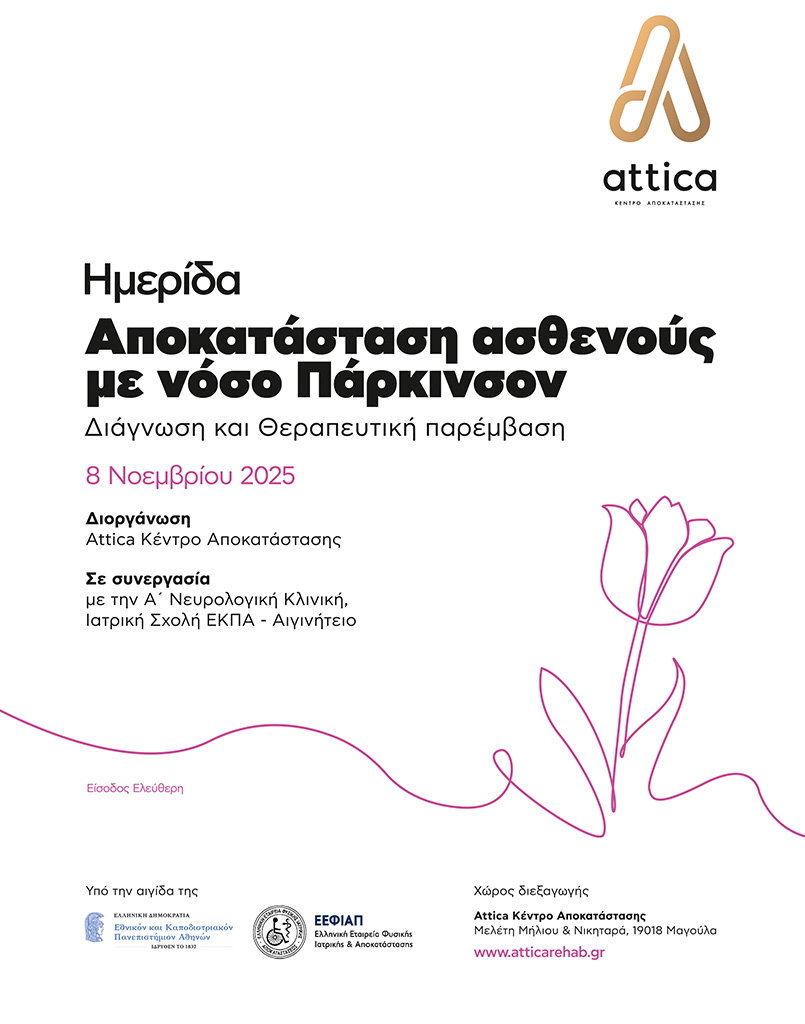The role of Physical Medicine & Rehabilitation is to prevent, diagnose, and intervene therapeutically, helping patients regain functionality through the use of physical means and technology. It aims to reintegrate individuals into society by enhancing their physical and mental functionality, ultimately providing them with improved quality of life. The PM&R Specialist is involved in all phases of the therapeutic process, starting with treating the underlying condition and progressing to other suitable therapeutic interventions to help patients gradually recover optimal functionality. Furthermore, essential training and guidance are provided to prevent relapses. The mission and philosophy of the Attica Rehabilitation & Recovery Center are to offer excellent healthcare services provided by a specialized and well-trained team. These services equip patients requiring rehabilitation with the necessary tools and resources to help them either return to their original condition or reintegrate into society as active and productive citizens. The role of
Physical Medicine & Rehabilitation

Mission & Philosophy
The rehabilitation process is long-term and includes the following phases:
Rehabilitation begins during the acute and early stages of the condition at the Attica Rehabilitation & Recovery Center with an intensive rehabilitation program. The primary objective is to guide the recovery process, minimize negative neuroplasticity adaptations, and facilitate mechanisms for restoring or compensating for impaired functions to achieve cognitive and motor neurological maturity and functionality. Early-phase rehabilitation is considered the ideal intervention period, as spontaneous recovery mechanisms are strongest during this time. These are enhanced through specialized rehabilitation techniques, supported by robotic technology and virtual reality tools.
Patients participate in group therapy with individuals experiencing similar conditions and engage in therapeutic recreational activities, such as sports, as well as the use of virtual reality to sustain progress.
Patients are trained in self-care, and caregivers are taught how to manage daily life effectively, ensuring the best possible long-term results.
- Home
- Attica
- Meet The Team
- Conditions
- Specialized Clinics
- Multiple Sclerosis Clinic
- Clinic for Muscle Tone Disorders and Spasticity
- Clinic for Neurogenic Bladder & Neurogenic Bowel
- Sports Injuries Department
- General Physical Medicine and Rehabilitation Clinic
- Cognitive Rehabilitation Clinic
- Balance & Gait Re-education Clinic
- Biomedical Acupuncture Clinic
- Speech Disorders Clinic
- PRP Injection Clinic
- Technological Innovations
- Services
- News
- Contact


